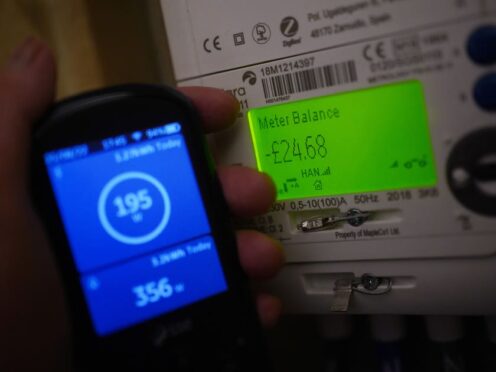
Millions of households are missing out on the benefits of their smart meter due to faults and poor service from their supplier, Citizens Advice has warned.
More than half of British homes now have a smart meter, but they are being let down by suppliers who are often “nowhere to be found” when problems arise with them, the consumer charity said.
It has called for new rules to ensure energy suppliers identify and fix problems as quickly as possible, saying it was particularly worried that people could end up with huge unexpected bills if their supplier is not able to take an automatic reading for an extended period of time.
Current rules allow suppliers to “back bill” customers for an entire year, whether they have a smart meter or not, but Citizens Advice said this period must now be cut to six months to avoid hefty catch-up bills.
A survey for the group found 20% of households with a smart meter – 2.86 million households – still have to regularly submit manual meter readings because their device is not doing this automatically.
Almost a third (31%) experienced issues with their in-home display (IHD) screen that helps households track their energy usage and costs.
A quarter of people who asked Citizens Advice for help with smart meter issues had billing problems.
In some cases, shock catch-up bills of £1,000 and upwards were sent to customers after meters went unchecked by suppliers for more than a year.
Government figures show that more than 10% of smart meters were not working properly by the end of last year, but Citizens Advice said it believed this was the tip of the iceberg.
It wants suppliers to be forced to meet new Guaranteed Standards of Performance, which would ensure timely diagnosis of issues and repairs, with affected consumers automatically compensated if these were not met.
It also wants consumers not to be left “waiting in limbo” when suppliers blame issues on the Data Communications Company, which is responsible for the technology’s network, leaving smart users unable to get some issues resolved directly.
Citizens Advice chief executive Dame Clare Moriarty said: “The whole point of smart meters is to empower households to save energy and money, but in reality millions are missing out on those benefits due to problems with technology and poor supplier service.
“Energy companies are very keen for customers to get a smart meter but when issues arise they are often nowhere to be found. That has to change.
“Suppliers have been far too sluggish in fixing issues with problem meters.
“New obligations and stronger accountability measures are needed to restore public trust in this vital tool to reach net zero.”
A Smart Energy GB spokeswoman said: “The vast majority of smart meters are operating as they should and it’s good to see this report highlight that most smart meter owners are happy with them, benefiting from the ability to better manage their energy use and access smart products and more flexible energy tariffs.
“However, if you’re among the minority with a smart meter that isn’t currently sending readings automatically to your supplier then we understand this can be frustrating.
“Please be assured that if your meter isn’t currently sending readings automatically, it should still be recording your energy use and your energy won’t cost you more.
“We would recommend that you contact your supplier if you experience an issue with your smart meter and send them regular meter readings to make sure you receive accurate, rather than estimated, bills until all of the features of your smart meter have been restored.”
A Department for Energy Security and Net Zero spokeswoman said: “Our official statistics show the vast majority of meters are working in smart mode – almost 90% of the 35 million smart meters installed.
“Energy suppliers are required to keep their customers’ meters working and Ofgem is responsible for regulating them against this requirement.
“Any issues with smart meters and in home display screens should be addressed promptly and we will soon announce plans to drive better service for new and existing smart meter customers.”
An Ofgem spokeswoman said: “While the majority of smart meters are working correctly, we’ve asked suppliers to provide us with more detail on how they plan to tackle connectivity issues.
“Suppliers are responsible for making sure their customers’ smart meters operate correctly, and we expect them to communicate with their customers clearly if there are any issues with their smart meter.”
Savanta surveyed 4,000 domestic energy consumers between August and October.

Enjoy the convenience of having The Sunday Post delivered as a digital ePaper straight to your smartphone, tablet or computer.
Subscribe for only £5.49 a month and enjoy all the benefits of the printed paper as a digital replica.
Subscribe